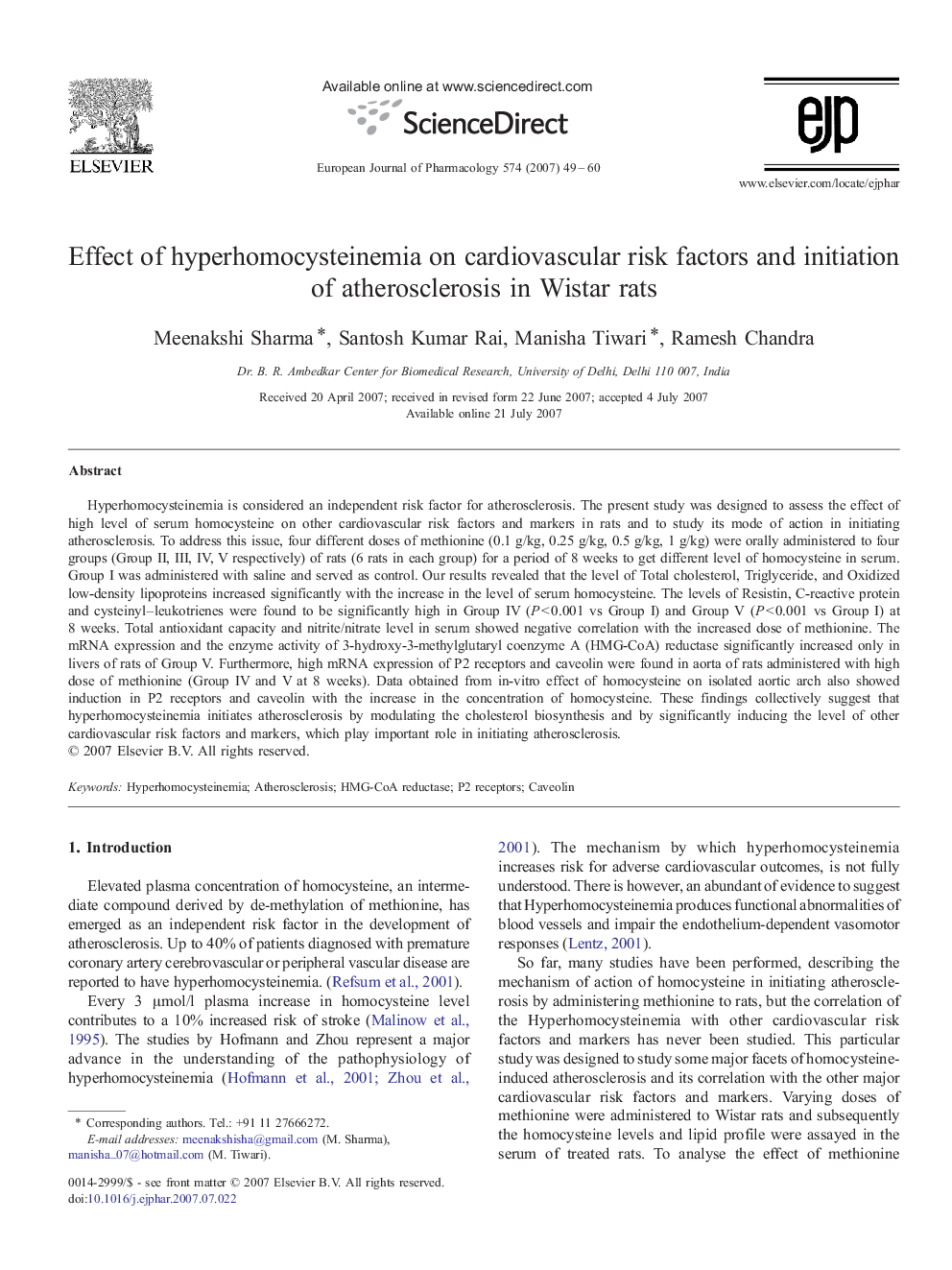| کد مقاله | کد نشریه | سال انتشار | مقاله انگلیسی | نسخه تمام متن |
|---|---|---|---|---|
| 2535668 | 1559130 | 2007 | 12 صفحه PDF | دانلود رایگان |
عنوان انگلیسی مقاله ISI
Effect of hyperhomocysteinemia on cardiovascular risk factors and initiation of atherosclerosis in Wistar rats
دانلود مقاله + سفارش ترجمه
دانلود مقاله ISI انگلیسی
رایگان برای ایرانیان
کلمات کلیدی
موضوعات مرتبط
علوم زیستی و بیوفناوری
علم عصب شناسی
علوم اعصاب سلولی و مولکولی
پیش نمایش صفحه اول مقاله

چکیده انگلیسی
Hyperhomocysteinemia is considered an independent risk factor for atherosclerosis. The present study was designed to assess the effect of high level of serum homocysteine on other cardiovascular risk factors and markers in rats and to study its mode of action in initiating atherosclerosis. To address this issue, four different doses of methionine (0.1Â g/kg, 0.25Â g/kg, 0.5Â g/kg, 1Â g/kg) were orally administered to four groups (Group II, III, IV, V respectively) of rats (6 rats in each group) for a period of 8Â weeks to get different level of homocysteine in serum. Group I was administered with saline and served as control. Our results revealed that the level of Total cholesterol, Triglyceride, and Oxidized low-density lipoproteins increased significantly with the increase in the level of serum homocysteine. The levels of Resistin, C-reactive protein and cysteinyl-leukotrienes were found to be significantly high in Group IV (PÂ <Â 0.001 vs Group I) and Group V (PÂ <Â 0.001 vs Group I) at 8Â weeks. Total antioxidant capacity and nitrite/nitrate level in serum showed negative correlation with the increased dose of methionine. The mRNA expression and the enzyme activity of 3-hydroxy-3-methylglutaryl coenzyme A (HMG-CoA) reductase significantly increased only in livers of rats of Group V. Furthermore, high mRNA expression of P2 receptors and caveolin were found in aorta of rats administered with high dose of methionine (Group IV and V at 8Â weeks). Data obtained from in-vitro effect of homocysteine on isolated aortic arch also showed induction in P2 receptors and caveolin with the increase in the concentration of homocysteine. These findings collectively suggest that hyperhomocysteinemia initiates atherosclerosis by modulating the cholesterol biosynthesis and by significantly inducing the level of other cardiovascular risk factors and markers, which play important role in initiating atherosclerosis.
ناشر
Database: Elsevier - ScienceDirect (ساینس دایرکت)
Journal: European Journal of Pharmacology - Volume 574, Issue 1, 21 November 2007, Pages 49-60
Journal: European Journal of Pharmacology - Volume 574, Issue 1, 21 November 2007, Pages 49-60
نویسندگان
Meenakshi Sharma, Santosh Kumar Rai, Manisha Tiwari, Ramesh Chandra,